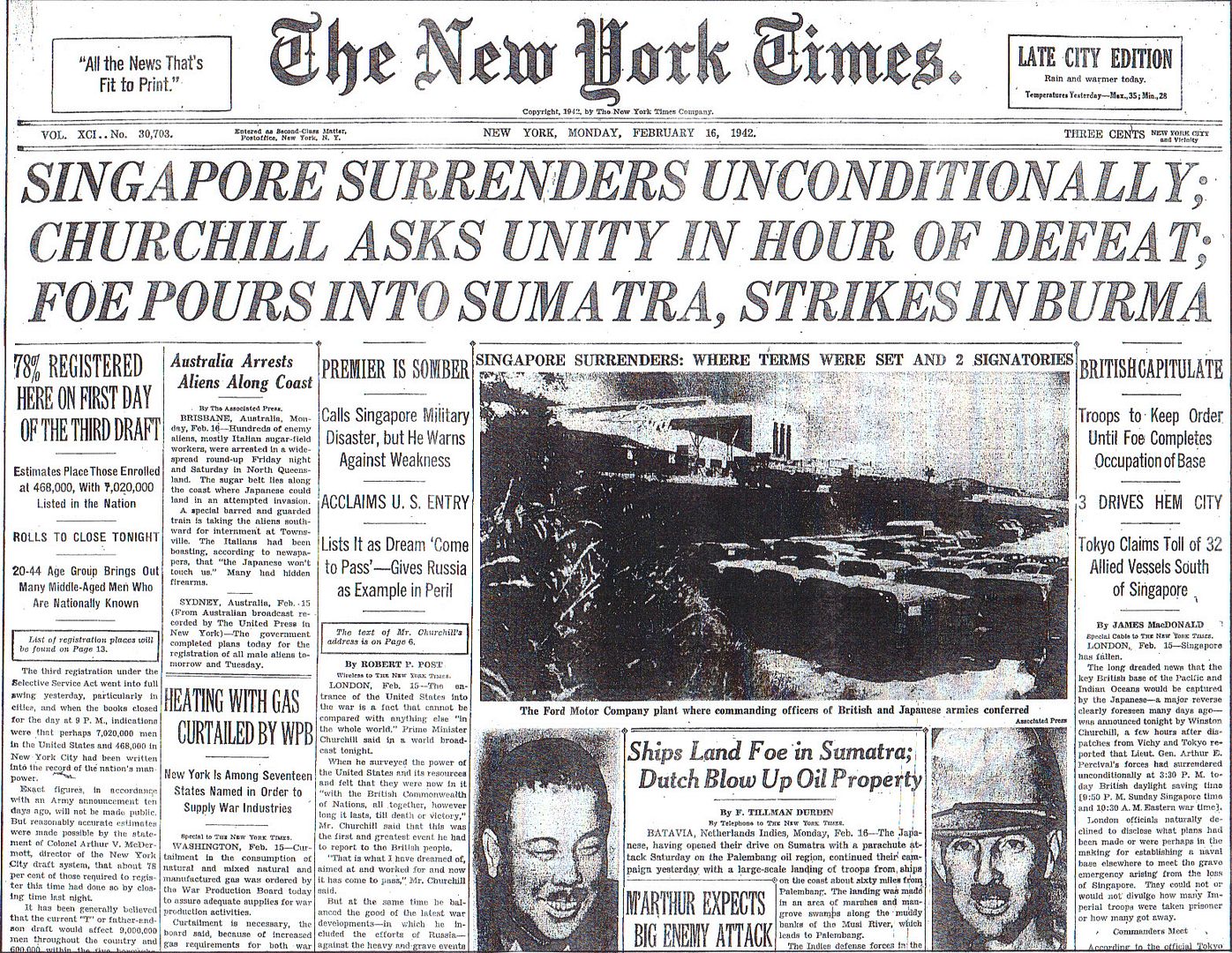
Posted on 02/16/2012 4:47:12 AM PST by Homer_J_Simpson

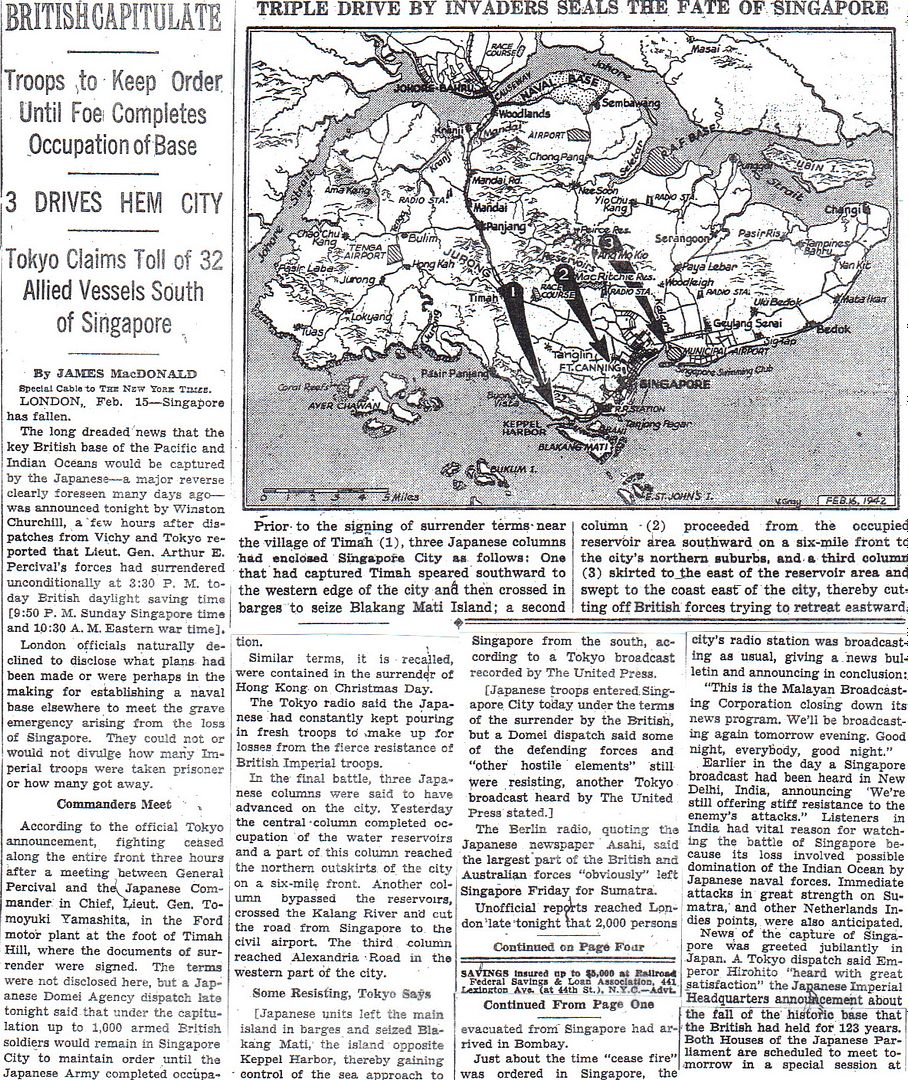
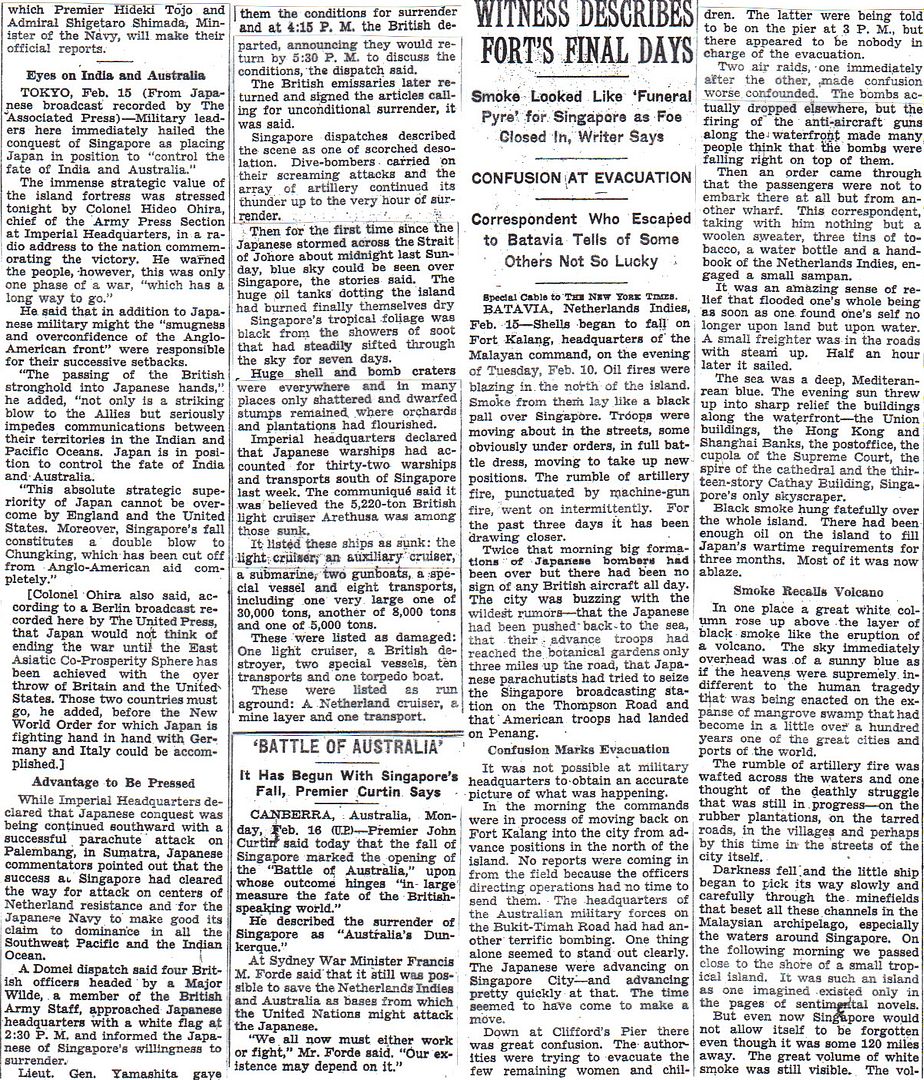
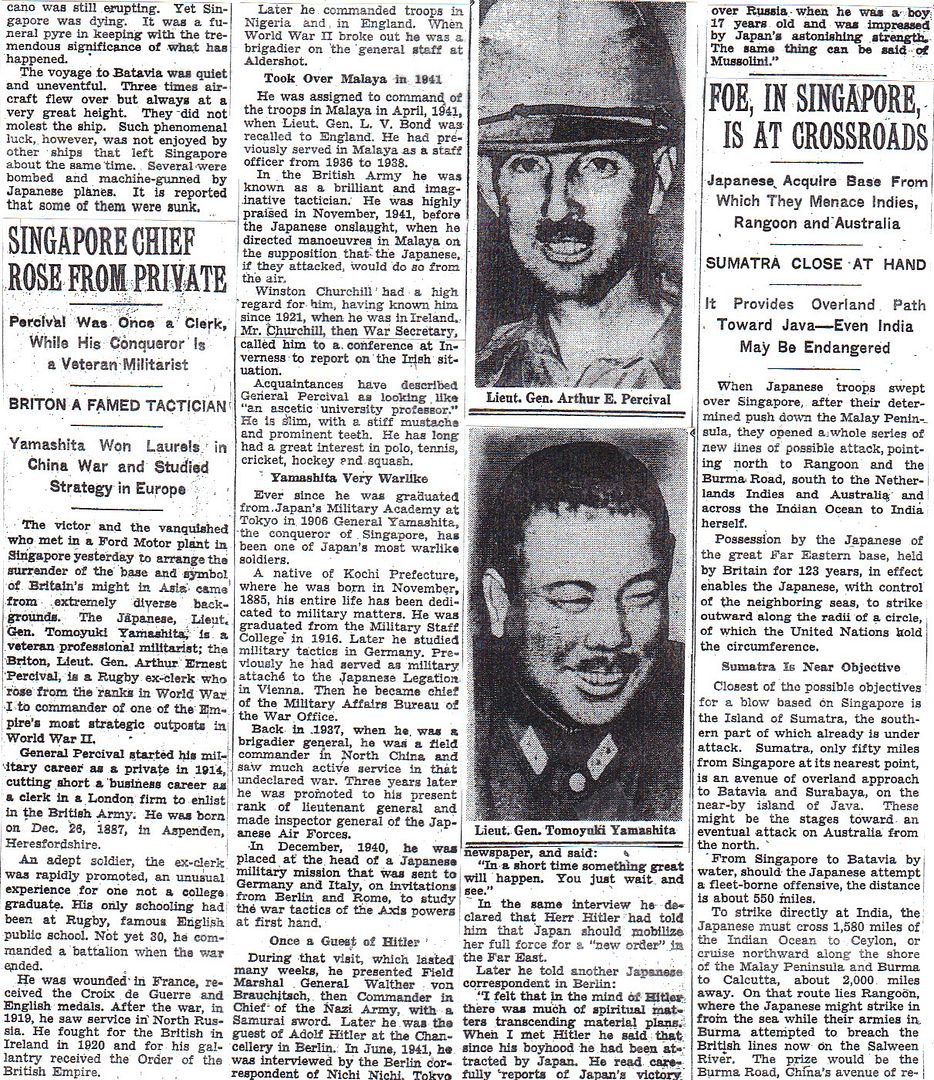
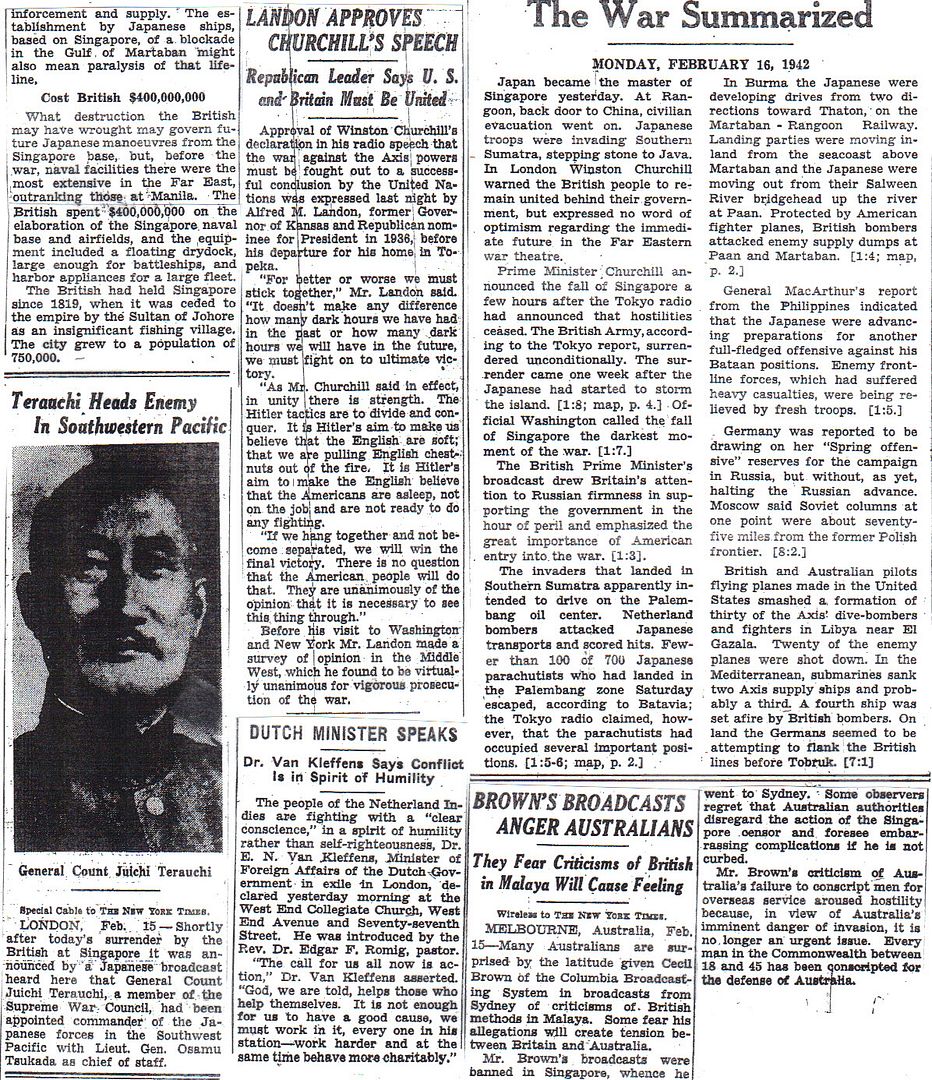
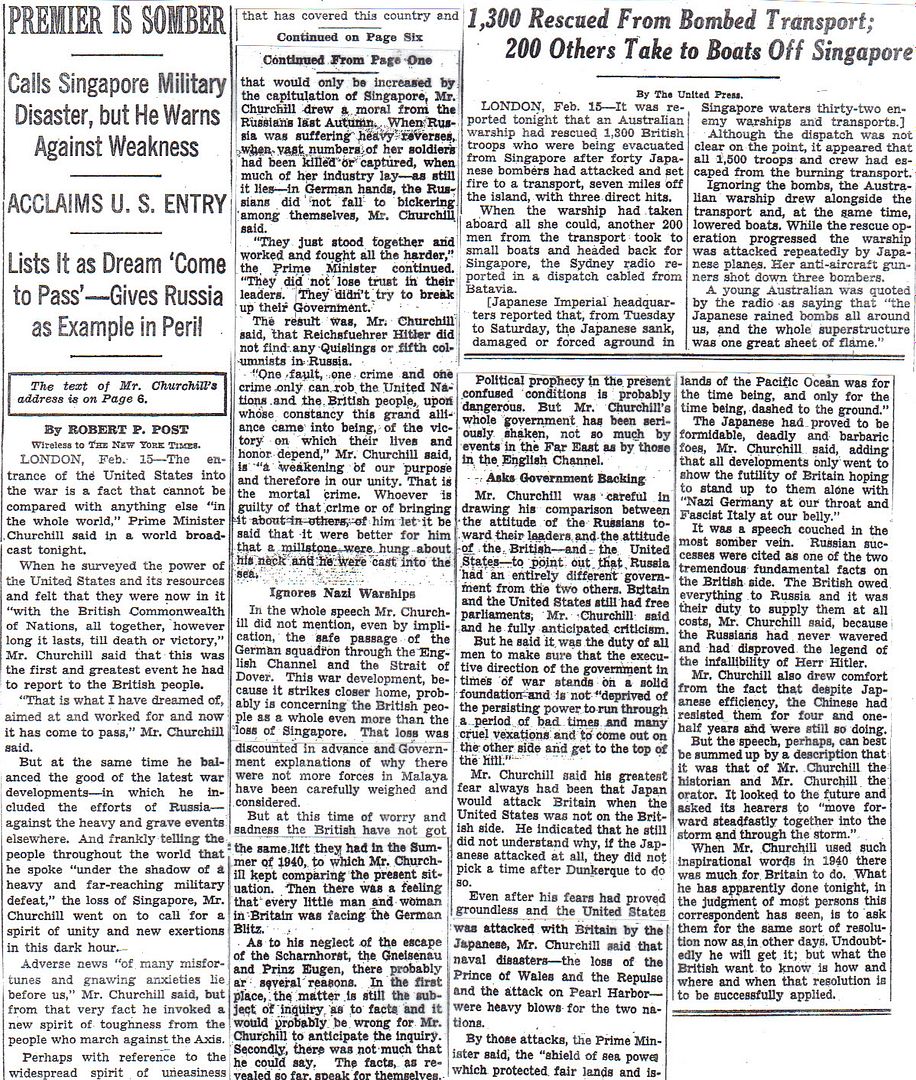

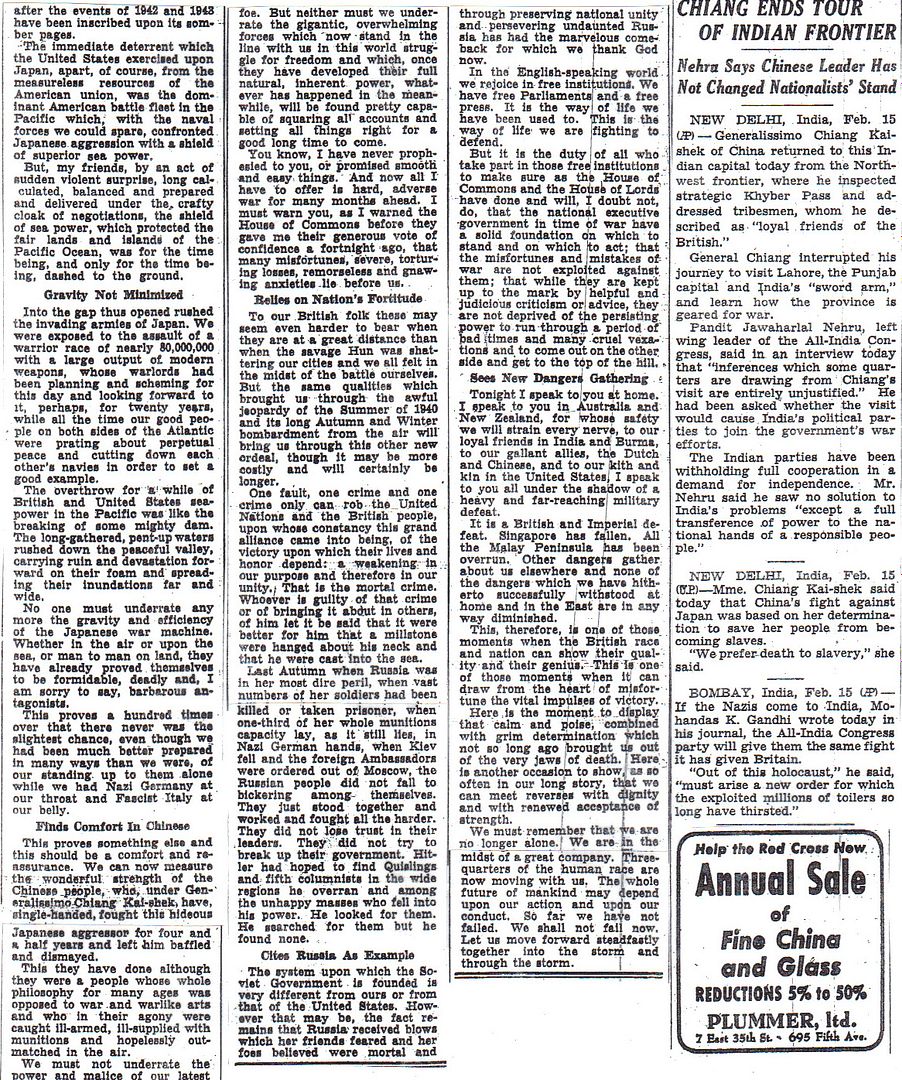
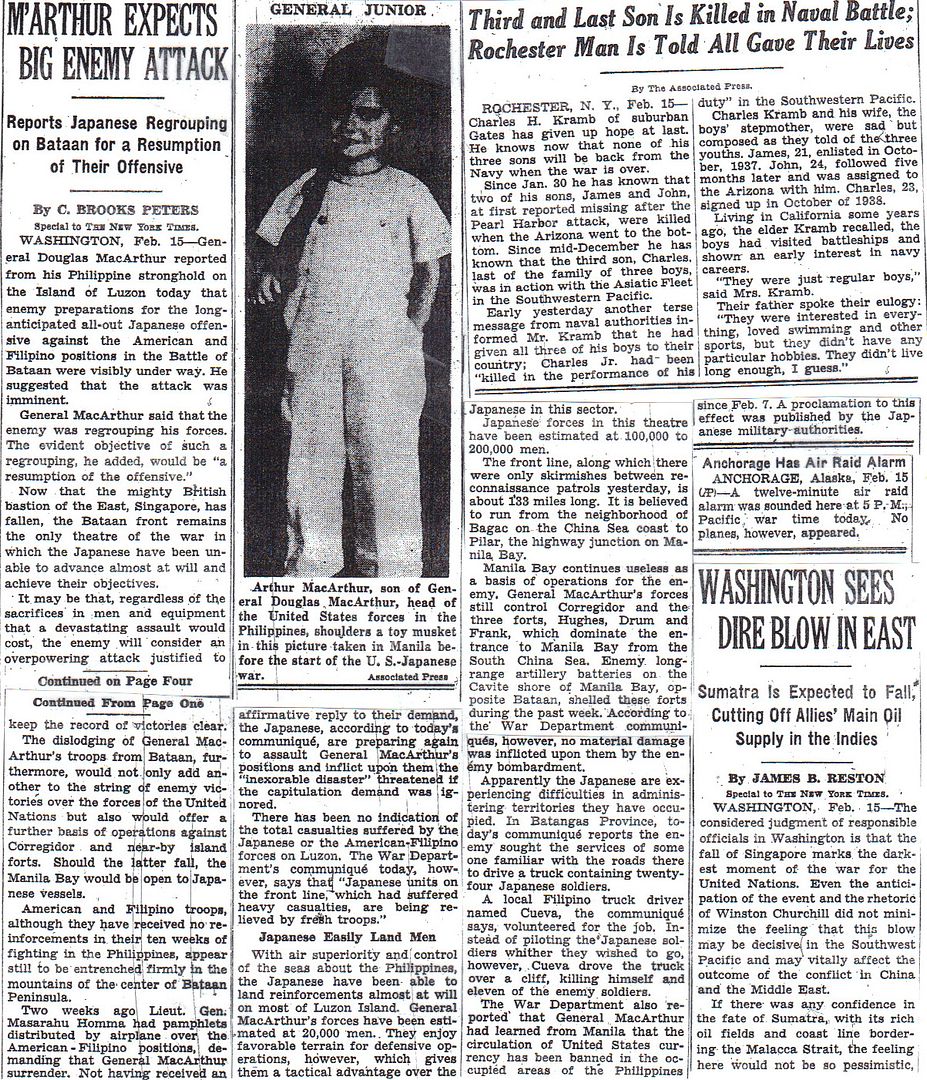
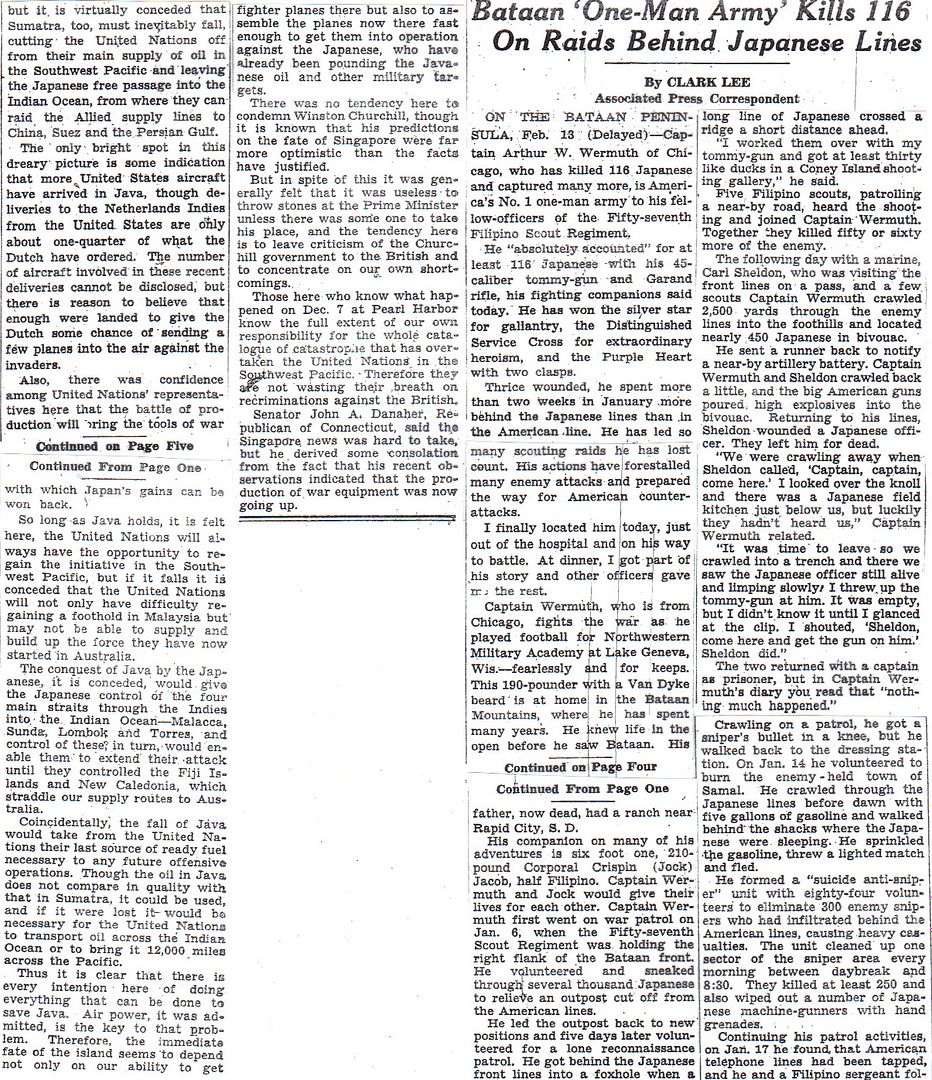
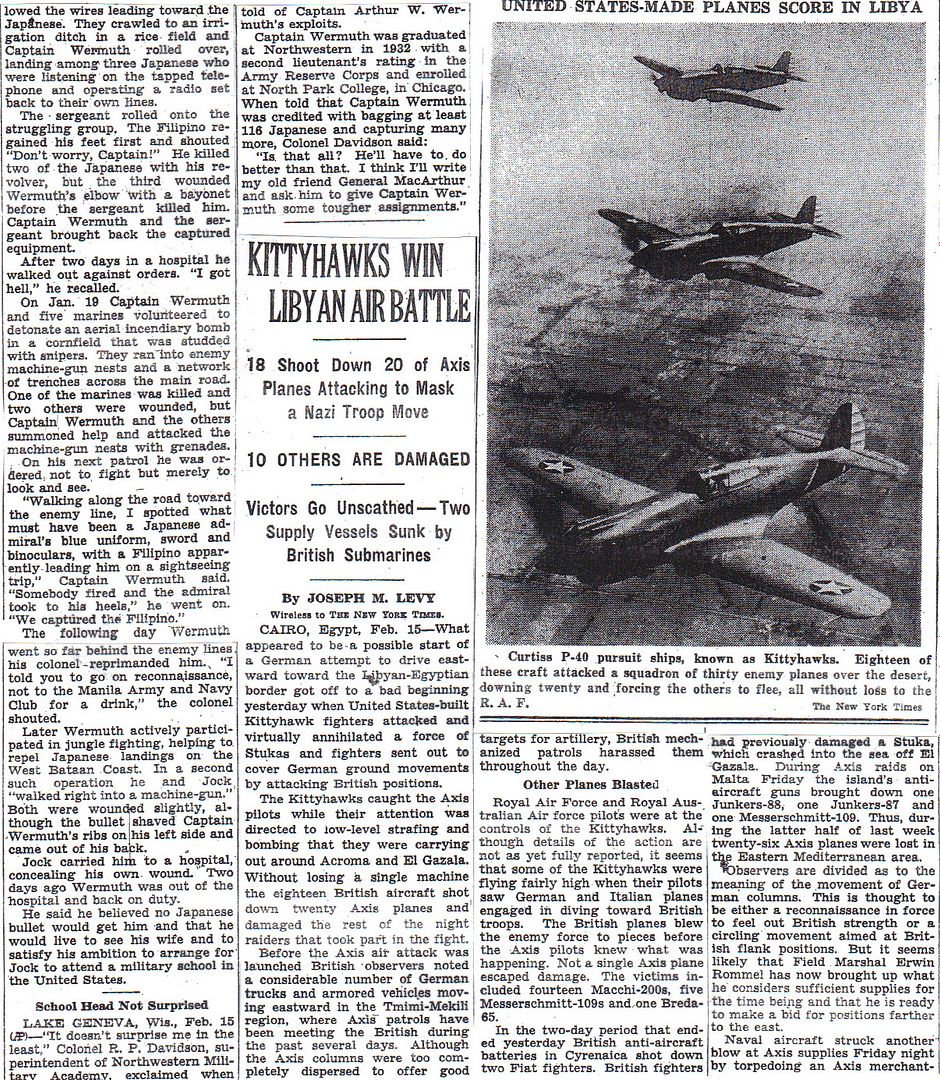

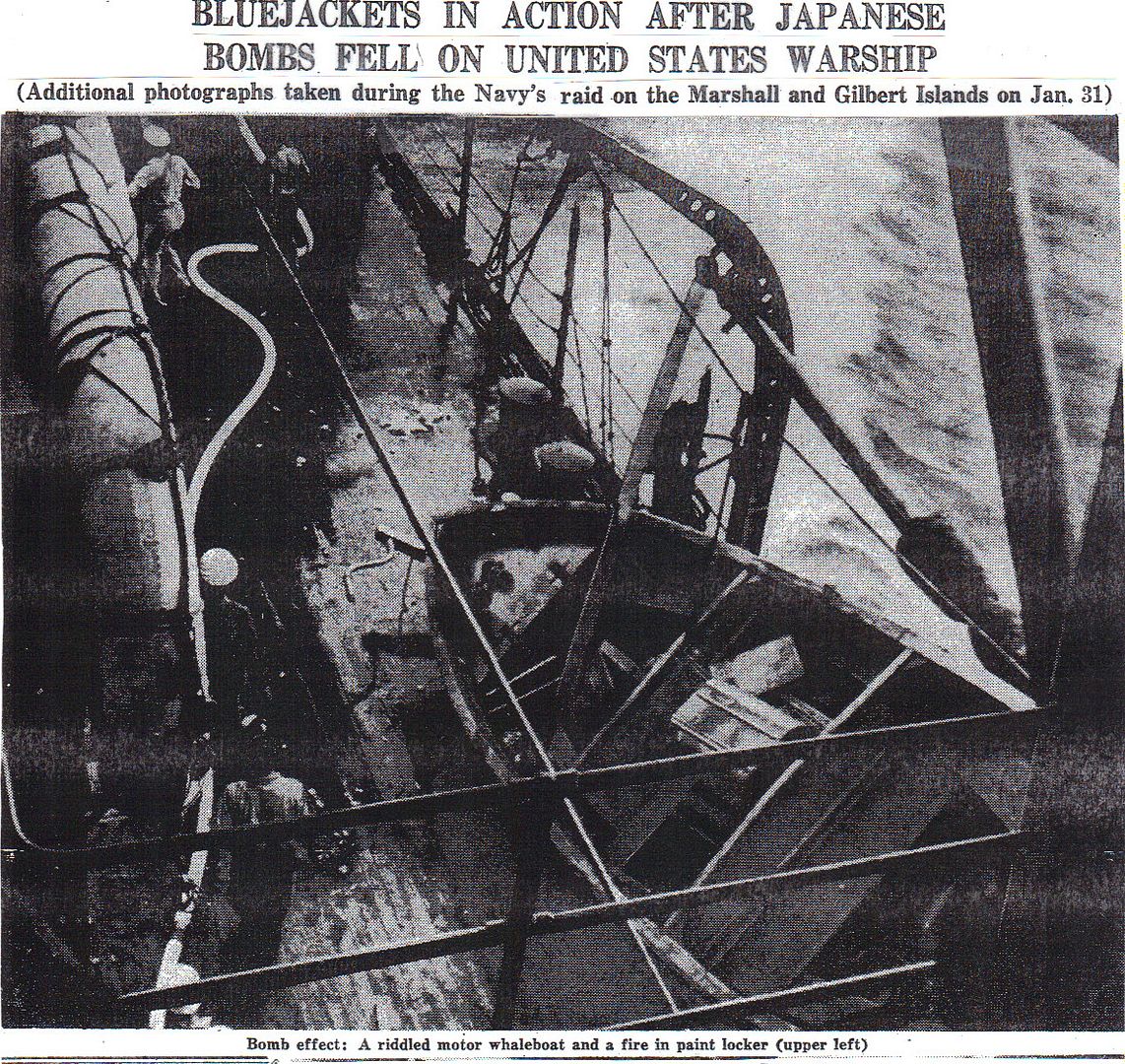
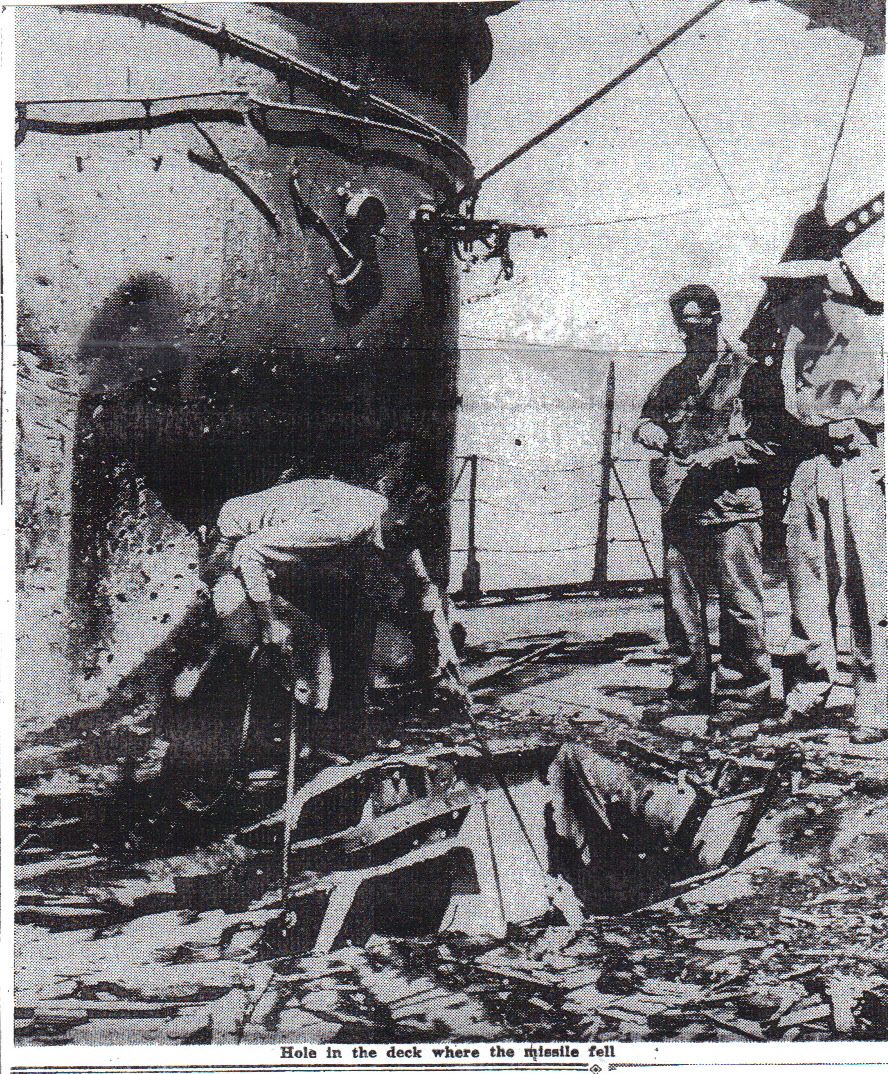
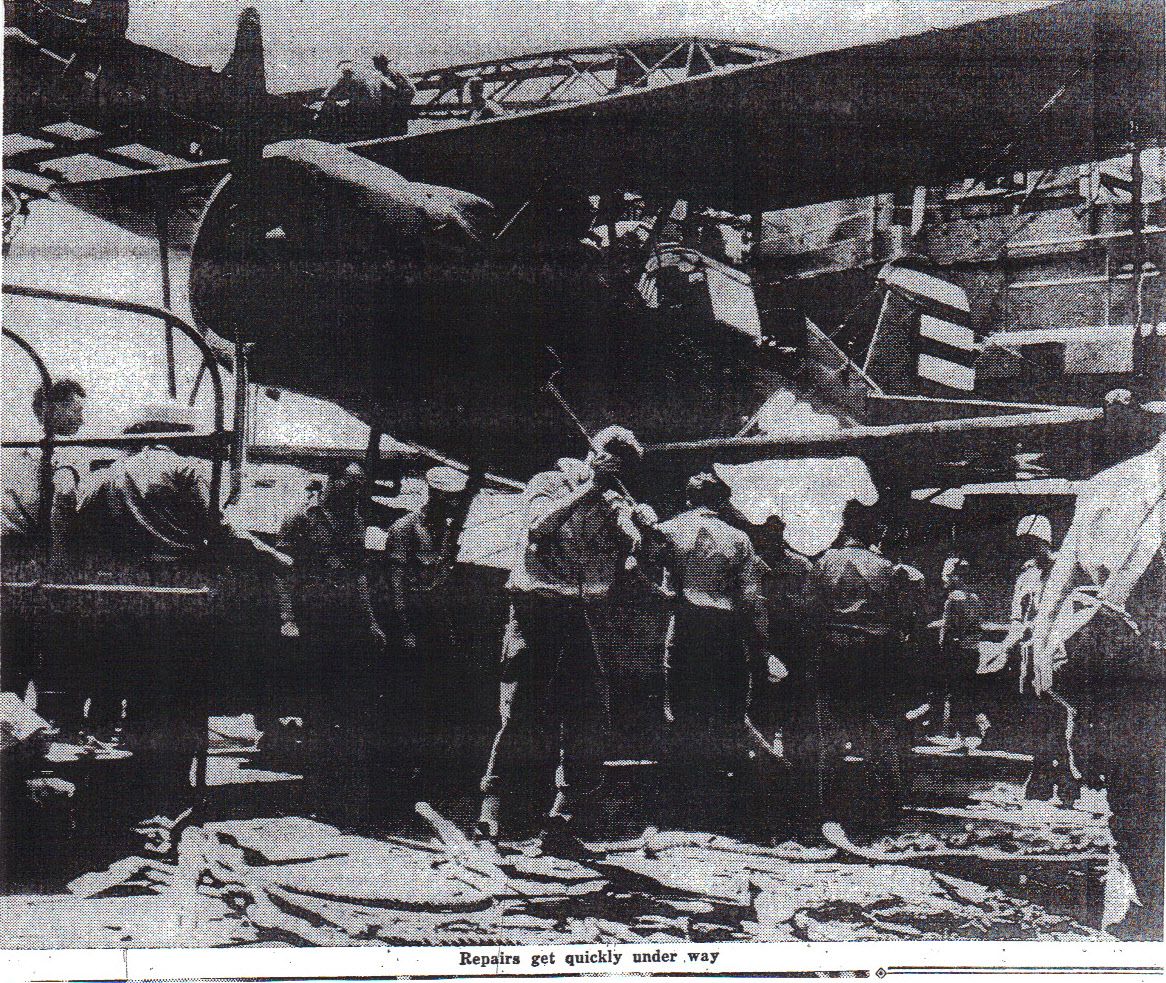
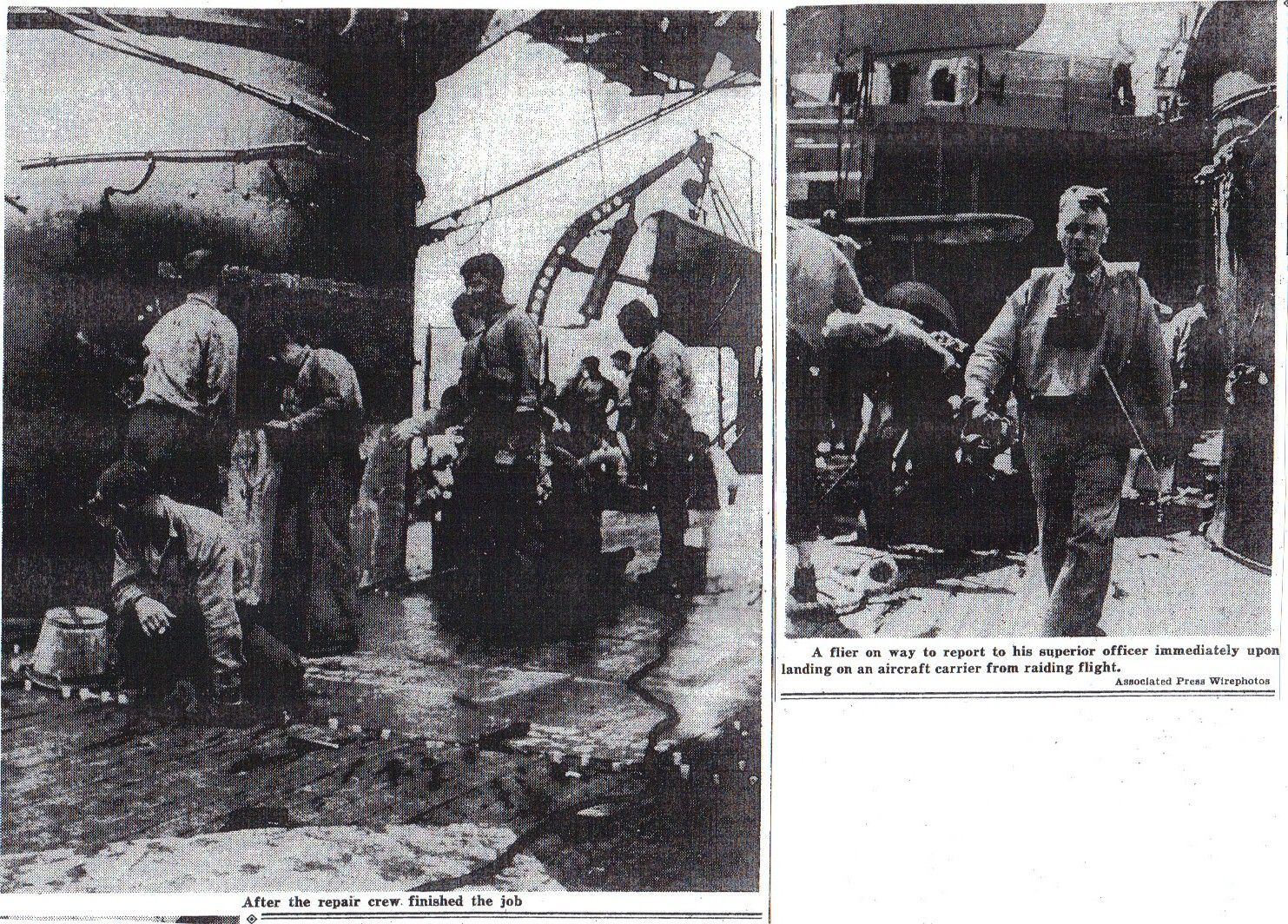
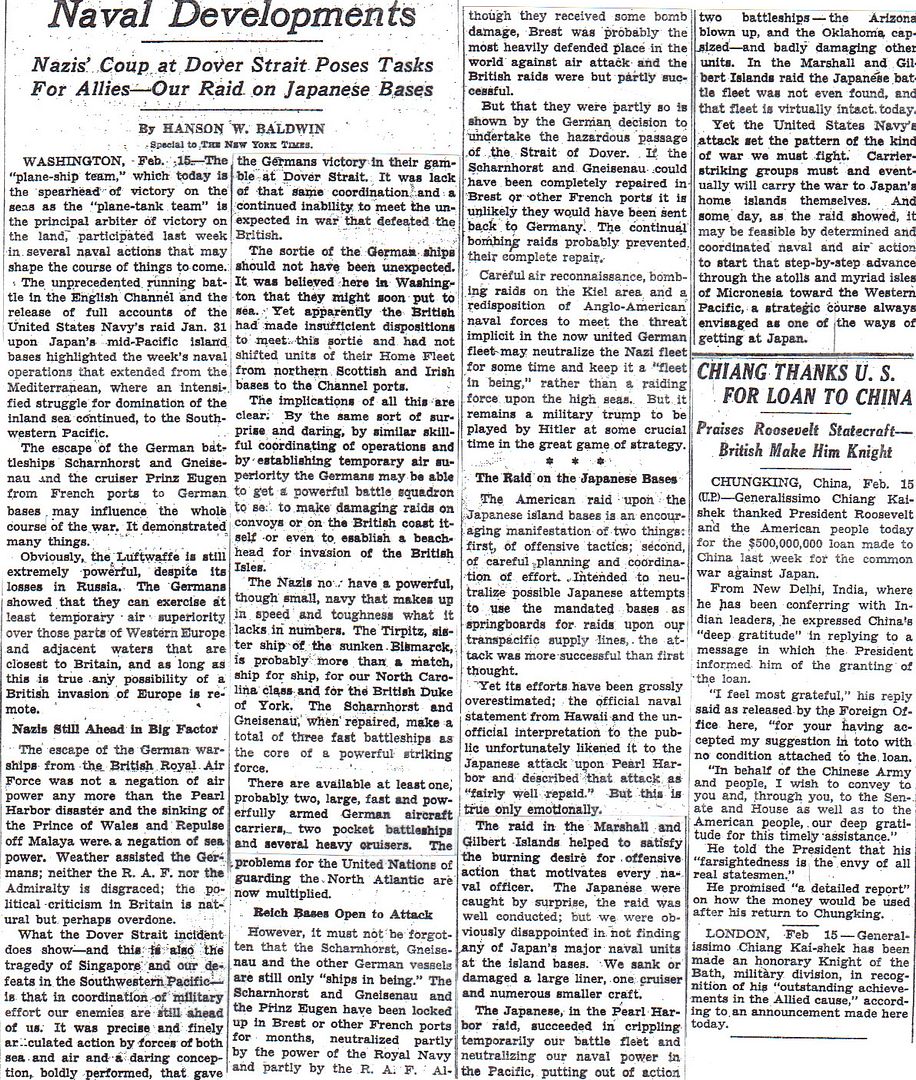
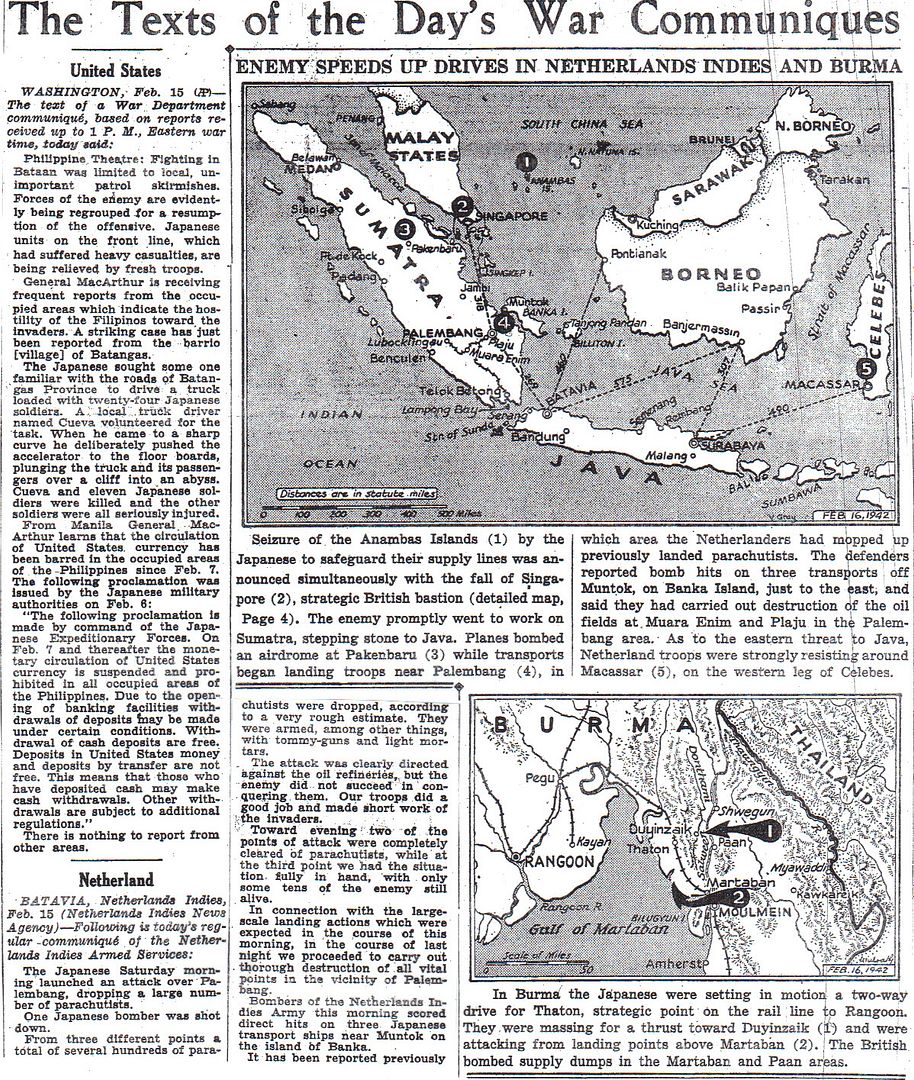
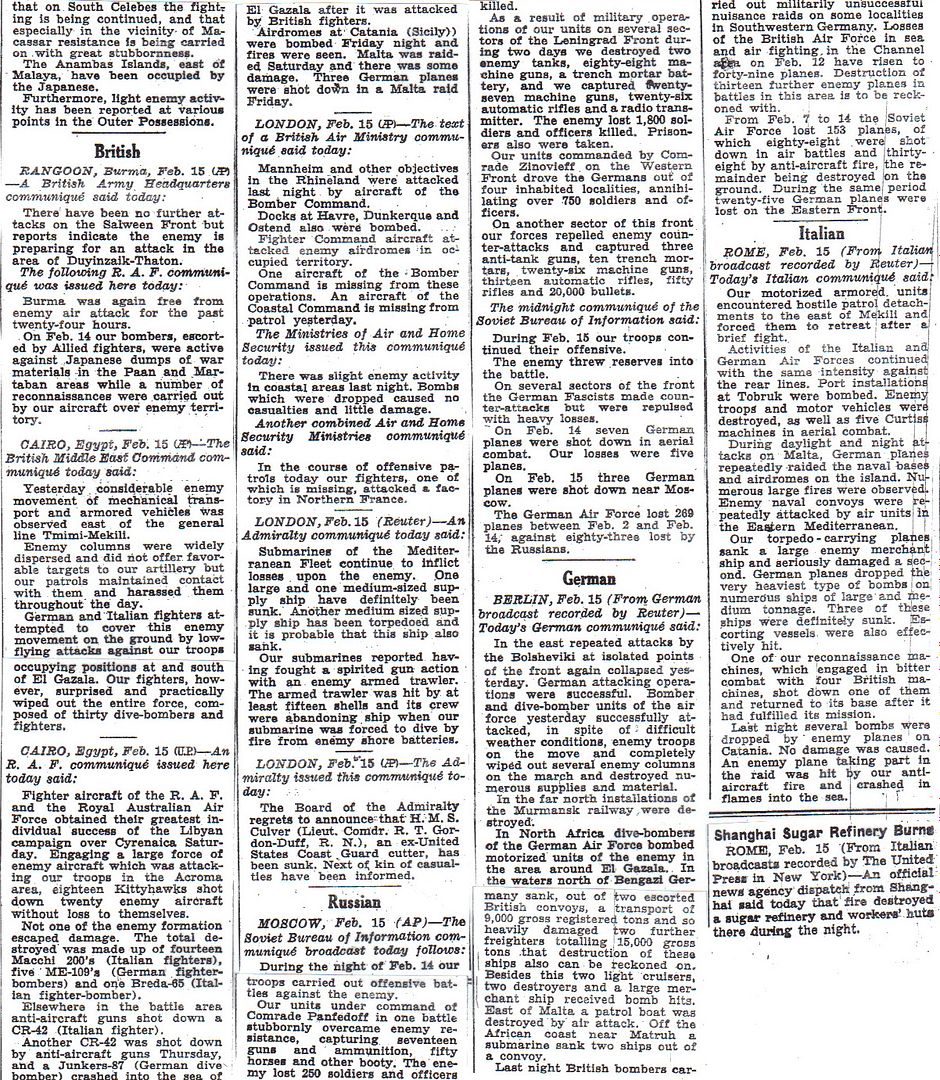
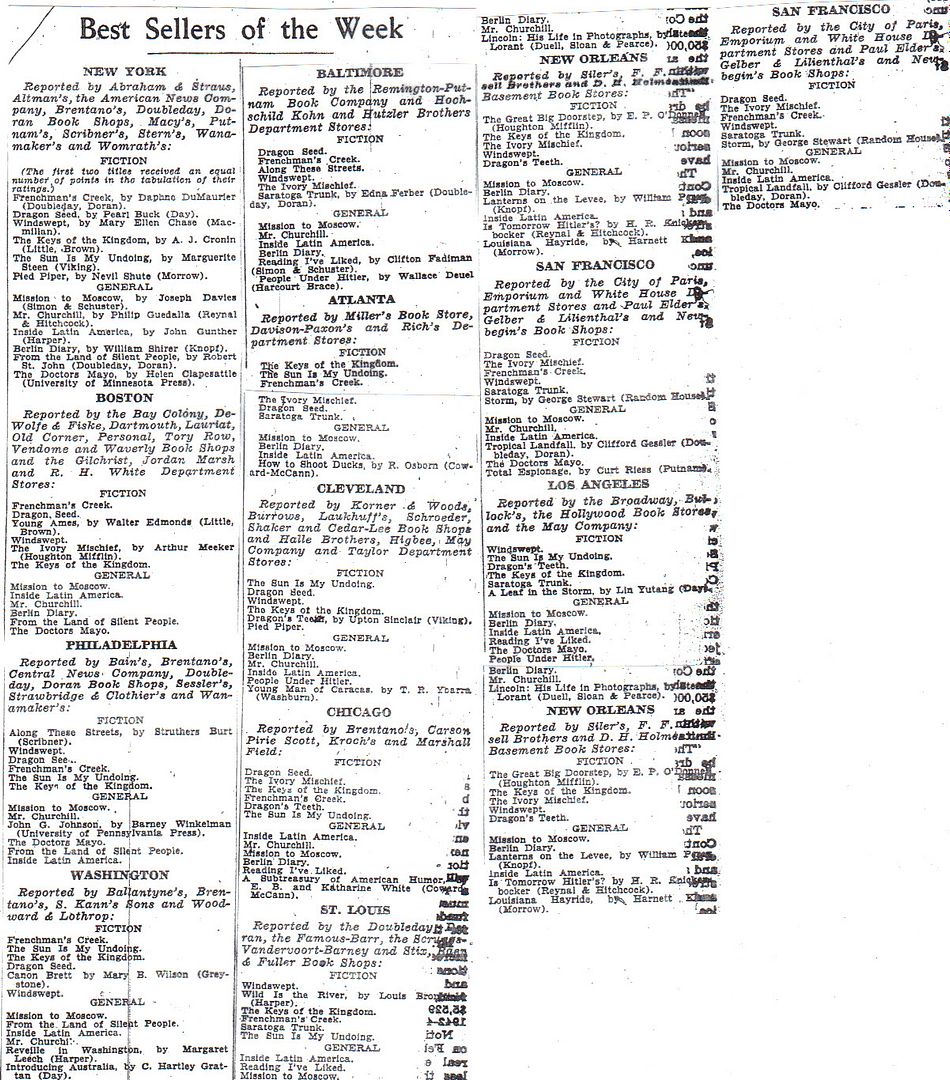
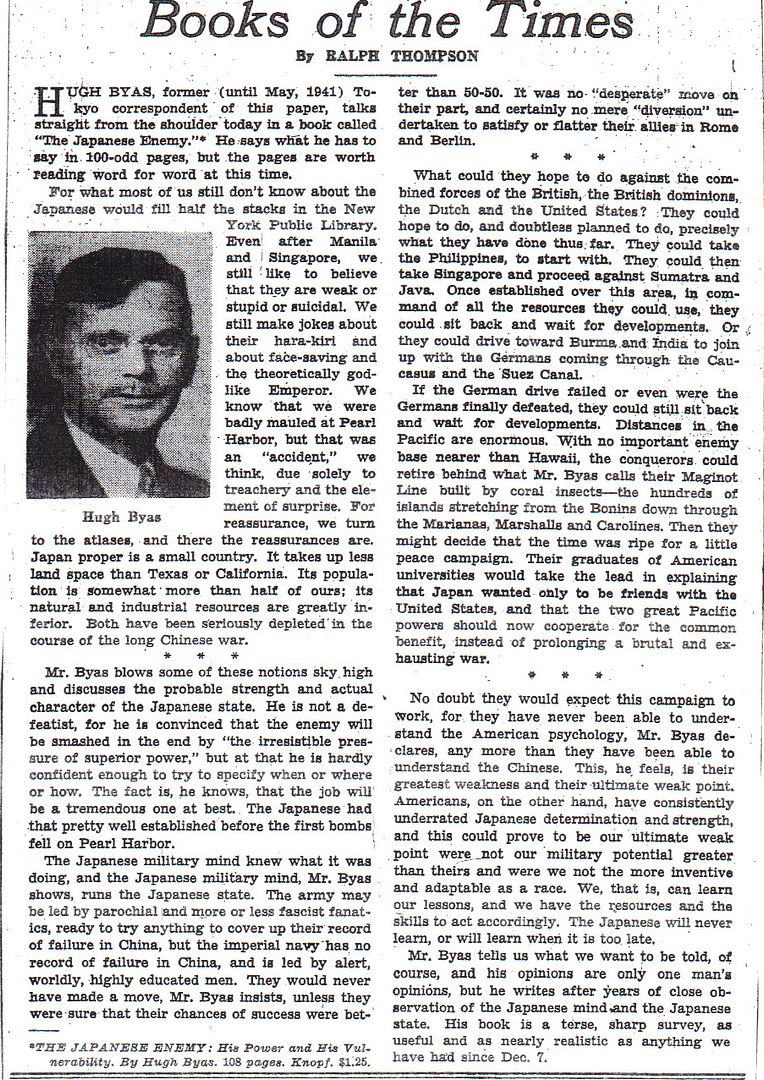


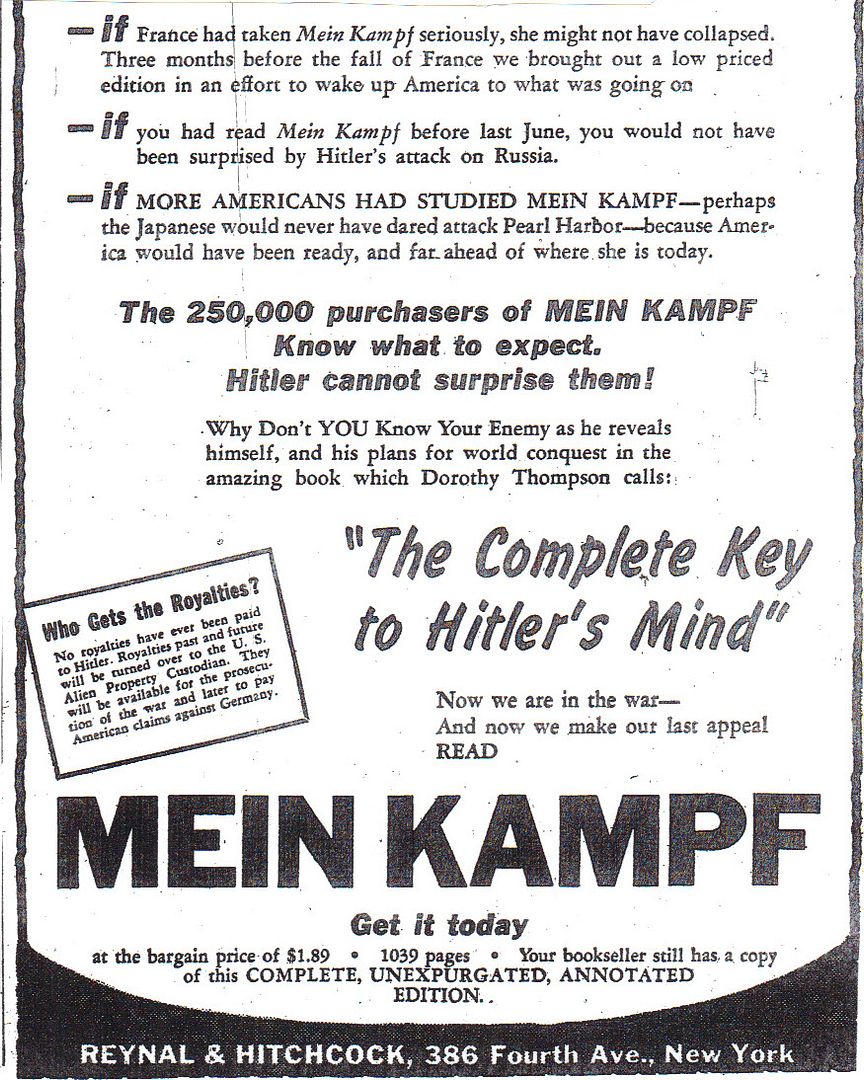
* Quarterly feature to follow evolution of American reading habits. Daphne DuMaurier is back on the charts with “Frenchman’s Creek.” Dragons are also big, with “Dragon Seed” and/or “Dragon’s Teeth” on most lists Here are the earlier lists. They are near the end of the post in each case.
11/17/41 Thread
8/18/41 Thread
5/19/41 Thread
2/17/41 Thread
11/18/40 Thread
8/19/40 Thread
5/13/40 Thread
2/19/40 Thread
10/23/39 Thread
http://www.onwar.com/chrono/1942/feb42/f16feb42.htm
U-boats operating in the Caribbean
Monday, February 16, 1942 www.onwar.com
Allied transport under attack by German subIn the Caribbean... German U-boats shell the oil installations at Aruba. Seven tankers are sunk by German torpedoes.
In Tokyo... General Tojo, the Japanese premier, announces his war goals to the Diet (the Japanese parliament). He speaks of a “new order of coexistence and co-prosperity based on the ethical principles of Greater East Asia.”
In Burma... Fighting continues along the Bilin River as the Japanese continue their advance.
http://homepage.ntlworld.com/andrew.etherington/month/thismonth/16.htm
February 16th, 1942
UNITED KINGDOM: The fall of Singapore was announced to Britain and the world by Mr. Churchill on the wireless last night. In a 23-miinute broadcast, his first for six months, Mr. Churchill said that the loss of Singapore was a “heavy and far-reaching defeat”. Invoking Dunkirk, he called for unity and warned that only weakness of purpose “can rob the united nations of victory.” The prime minister added: “This is one of those moments when the British race can show its quality and genius, when it can draw from the heart of misfortune the vital impulse of victory.
“We must remember we are no longer alone. Three-quarters of the human race are now moving with us. The whole future of mankind may depend on our action and on our conduct.”
Destroyer HMS Virago laid down.
Submarines HMS Unrivalled and Saracen launched.
Corvette HMS Pink launched.
(Dave Shirlaw)
FRANCE: During the night of the16-17th, RAF Bomber Command dispatches 11 aircraft to drop leaflets. (Jack McKillop)
GERMANY: During the night of the 16-17th, RAF Bomber Command dispatches 37 Hampdens and 12 Manchesters to the Frisian Islands; one Hampden and one Manchester are lost. Eighteen Wellingtons fly roving commissions over Northern Germany, eight aircraft bomb Bremen, seven bomb Aurich, two hit Oldenburg, one hit Wilhemshaven. (Jack McKillop)
THE NETHERLANDS: During the night of the 16-17th, two RAF Bomber Command bombers hit Schipol Airfield in Amsterdam and Sosterberg Airfield. (Jack McKillop)
NORTH SEA: Eight RAF Bostons, of No. 88 and 226 Squadrons, commenced the first regular operations with this new type the of day bomber. They searched for German shipping off the Dutch coast without success or loss. (Jack McKillop)
MEDITERRANEAN SEA: Lt. Peter Scawen Watkinson Roberts (1917-79) and PO Thomas William Gould (b. 1914), of HMS THRASHER, removed two unexploded bombs - one was stuck in a very confined space - lodged in the submarine’s gun casing. Both are to be awarded the George Cross.
JAPAN: Prime Minister Tojo speaks to the Japanese Diet. He speaks of “a new order of co-existence and co-prosperity on ethical principles in Greater East Asia.”
Amid scenes of unbelievable jubilation the Japanese government has announced that it will officially celebrate the fall of Singapore with a national victory day in two days’ time. In Singapore the triumphant 25th Army troops are to stage a Banzai victory march through the city.
On the way to them is a message wrapped in scarlet silk and written in an ancient Japanese script that only the emperor can use. The message simply states: “I praise you all.” But the architect of the Japanese victory, Lieutenant-General Yamashita, may find his triumph shortlived. The Japanese premier, General Hideki Tojo, fears that Yamashita may become a candidate for war minister - portfolio which Tojo holds - and is to transfer him to Manchukuo.
SINGAPORE: The Japanese flag is hoisted above the former British governor’s residence.
The first and sweetest task for General Yamashita, who ordered the assault on Singapore knowing his men had only a few hours of ammunition left, has been to receive an inventory of the massive array of captured arms and ammunition which could have lasted the defenders three months.
The haul includes 55,000 rifles with 18 million rounds of ammunition, 2,300 machine guns with 500,000 rounds and 300 field guns. Half of these are modern 25-pounders with armour-piercing shells - effective weapons against tanks and pillboxes. Also captured in working order are 49 of the 52 fortress guns guarding Singapore’s sea approaches - the wrong direction, as it turned out.
Meanwhile concern is growing about the fate of the 130,000 Australian, British and Indian prisoners of war who have surrendered here, following reports of Japanese atrocities during the invasion of Malaya and in other parts of the Far East theatre.
The Bulk of the Allied prisoners are being moved to Changi, the huge ex-British military base at the south-east corner of the island. With 50,000 men squeezed into four barracks the human density is worse than the Black Hole of Calcutta. Sanitation, water and feeding conditions are so bad that Allied doctors fear a major epidemic. Japanese attitudes to PoWs are shaped by their belief that it is a dishonourable to surrender when it is still possible to fight; but disrespect to PoWs can easily lead to savagery.
One instance of this was reported after Imperial Guard troops beheaded 200 wounded Indians and Australians left behind during the retreat from the Muar river. Similar reports of brutality have also come from Amboina, in the Dutch East Indies, where in three incidents a total of more than 600 Australian PoWs have been bayoneted to death.
NETHERLANDS EAST INDIES: The withdrawal of British personnel and operational aircraft from Sumatra to Java is completed; much equipment is left behind at Oesthaven. (Jack McKillop)
At sunrise on Radjik Beach on Banka Island, there are nearly 100 people, including children and wounded, survivors of the sinking of the small freighter SS Vyner Brooke on 14 February. An officer from the ship explains that since there is no food, no help for the injured and no chance of escape, they should give themselves up to the Japanese. He agrees to walk to Muntok, a town on the northwest of the island, and contact the Japanese. While he is away Matron Irene Drummond, the most senior of 22 Australian nurses on the beach, suggests that the civilian women and children should start off walking towards Muntok. At mid-morning the ship’s officer returns with about 20 Japanese soldiers. Having separated the men from the women prisoners, the Japanese divide the men into two groups, and march them along the beach and behind a headland. The nurses hear a quick succession of shots before the Japanese soldiers return, sit down in front of the women and clean their bayonets and rifles. A Japanese officer, smaller and more “nattily” dressed than his men, instructs the nurses to walk from the palm-fringed beach into the sea until they are waist deep in the waves. A couple of soldiers shove those who are slow to respond. Twenty-two nurses and one civilian woman walk into the waves, leaving ten or twelve stretcher cases on the beach. Fully aware of their fate, the nurses put on a brave face. Their matron, Irene Drummond, calls out: “Chin up, girls. I’m proud of you and I love you all.” At that point the Japanese fire. One of the nurses, Vivian Bullwinkel, later describes what happens next: they “started firing up and down the line with a machine gun. ... They just swept up and down the line and the girls fell one after the other. I was towards the end of the line and a bullet got me in the left loin and went straight through and came out towards the front. The force of it knocked me over into the water and there I lay. I did not lose consciousness. ... The waves brought me back on to the edge of the water. I lay there ten minutes and everything seemed quiet. I sat up and looked around and there was no sign of anybody. Then I got up and went up in the jungle and lay down and either slept or was unconscious for a couple of days.” After shooting the nurses, the Japanese bayonet the wounded; over 80 people are killed on the beach that day. Of the 65 Australian nurses aboard the SS Vyner Brooke, 12 are presumed drowned, 21 are shot and killed, 31 had landed on different parts of the island and survived and Nurse Bullwinkel, who survived the massacre, is captured ten days later and survives the war as a POW. (Jack McKillop)
COMMONWEALTH OF THE PHILIPPINES: On Bataan, the I Corps reduces the salient in the main line of resistance to an area 75 by 100 yards (69 by 91 meters). In the South Sector, Japanese remnants from Salaiim Point, attempting to escape northward, are detected about 7 miles (11 kilometres) from the point and destroyed in two-day fight. In the Manila Bay area, the Japanese destroy a section of pipeline on the Cavite shore through which Fort Frank on Carabao Island receives fresh water. A distillation plant is put into operation at Fort Frank. (Jack McKillop)
TIMOR SEA: Japanese planes bomb the U.S. Timor-bound convoy, escorted by heavy cruiser USS Houston (CA-30) and destroyer USS Peary (DD-226); U.S. Army transport USAT Miegs and a U.S. freighter are damaged by near-misses. On board the latter, one crewman is killed; of the 500 troops embarked, one is killed and 18 wounded. USS Houston’s heavy antiaircraft fire saves the convoy from destruction, but the imminent fall of Timor results in the recall of the convoy and its routing back to Darwin, Northern Territory, Australia. (Jack McKillop)
AUSTRALIA: After reviewing all of the recommendations and cables, the Australian Chiefs of Staff recommend that “if possible, all Australian forces now under order to transfer to the Far East from the Middle East should be diverted to Australia.” (Jack McKillop)
CANADA: Fairmile “B” Type HMC ML 086, 087, 088, 089, 090, 091, 092, 093, 094, 095, 096, 097, 098, 099, 100, 101, 102 and 103 ordered. (Dave Shirlaw)
U.S.A.: Battleship USS Alabama is launched.
Washington: The new plan for the reorganisation of the War Department is submitted by Stimson. (Marc James Small)
A letter to TIME magazine.
Cover Ornament
Sirs:
All Americans of whatsoever race abhor the tactics and the treachery of the Japanese at Pearl Harbor....but I desire, for one, to register a protest against the picture on your front cover, Jan. 26, which portrays a Japanese soldier as a helmeted monkey, dropping from the limb of a tree, with slanting eyes directed venomously in the direction of “Ter Poorten of the Indies....”
I very seriously question the tactics of belittling any race of human beings because they are different from ourselves....
Frank C. Rideout
Lieut. Colonel (Chaplain)
U.S. Army, Retired
TIME:
Aside from its ethical aspect there is no worse military fault than undervaluing the enemy. The little figure on the corner of TIME’s cover—not a monkeyfied Jap but a Japified monkey—was intended not as belittlement but as recognition of Japanese jungle agility.—ED
The cover can be seen at
http://www.time.com/time/covers/0,16641,1101420126,00.html
http://tinyurl.com/d62ka
(William Rinaman)
Submarines USS Redfin and Puffer laid down. (Dave Shirlaw)
CARIBBEAN SEA: The German Operation NEULAND begins with simultaneous attacks on Dutch and Venezuelan oil ports to disrupt production and flow of petroleum products vital to the Allied war effort; German submarine U-156 shells a refinery on Aruba, Netherlands West Indies, and torpedoes and damages a U.S. merchant tanker as she lies alongside Eagle Dock; a second torpedo misses the ship and runs up on the beach. There are further attacks on Curaçao. There are no casualties among the 37-man crew. The enemy does not emerge from the action unscathed, however, for the U-boat crew forgot to remove the water plug from the barrel of a gun. The resultant explosion kills one man [Matrosengefreiter Heinrich Büssinger]. The gunnery officer [II WO Leutnant zur See Dietrich von dem Borne, see right] lost his right leg in this incident, and so had to be put ashore into captivity at the French island of Martinique on 21 February. The commander decided to saw off the ruined portion of the gun barrel, and using this shorter barrel, on 27 February U-156 sank a 2,498-ton British steamer. The unarmed tanker SS Arkansas moored at the Eagle Dock in San Nicholas, Aruba when U-156 attacked the port. Hartenstein had already hit the Pedernales and Oranjestad before a torpedo struck the starboard side of the Arkansas between the #4 and #5 bunkers at 0943 hours. The explosion created a large hole and smaller holes at the port side, causing extensive structural damage. The crew of eight officers and 29 crewmen remained on the vessel and later walked down to the dock. Three hours later the crew reboarded her to assess the damage. The tanker proceeded to the other end of the island where temporary repairs were made. She later arrived at Galveston, Texas under her own power on 18 March, where she was overhauled before returning to service. A second torpedo, which had missed the Arkansas on the beach. It exploded while being removed and killed four of the shore personnel who were taking it away. Ten crewmembers from the Oranjestad were lost with 15 crewmembers rescued by harbour craft. Pedernales burned fiercely all night, but did not sink. The next day tugboats pushed her ashore, where the bow and stern were later removed and towed to the USA to be rebuilt. Seven tankers are sunk. (Jack McKillop and Dave Shirlaw)
Tankers SS San Nicolas and Tia Juana sunk by U-502 25 miles SW of Pt Macolla.
At 2038, U-564 began shelling motor tanker Opalia with her last 83 rounds from the 88-mm deck gun. Only three hits were scored, which damaged the tanker slightly.
At 1030, tanker SS Rafaela was hit amidships by one torpedo from U-67 while lying at anchor about 1 mile off Curaçao. The ship had been missed by a spread of two torpedoes at 0952 and another torpedo at 1011. Also a coup de grâce fired at 1052 hours did not hit and U-67 decided that the target was not worth another torpedo because the tanker was already badly damaged. The same day, the Rafaela was towed into the St. Anna Bay by the tugs Parmo and Mico, but later broke in two and sank to the ground. She was raised, repaired and returned to service after about four months. (Dave Shirlaw)
That’s a great story (page 10) about the “one-man army” of Bataan. Captain Arthur Wermuth will be captured by the Japanese in two months when the hospital he is recuperating in gets overrun by Japanese forces, and he spends the rest of the war as a POW. In August 1945 the Russians will liberate his POW camp and Wermuth will return to San Francisco weighing 105 lbs.
He ends up a sheriff in Colorado where he arrests L. Ron Hubbard and helps in the investigation of the kidnapping and murder of Adolph Coors III.
Wermuth died in 1981.
Disclaimer: Opinions posted on Free Republic are those of the individual posters and do not necessarily represent the opinion of Free Republic or its management. All materials posted herein are protected by copyright law and the exemption for fair use of copyrighted works.